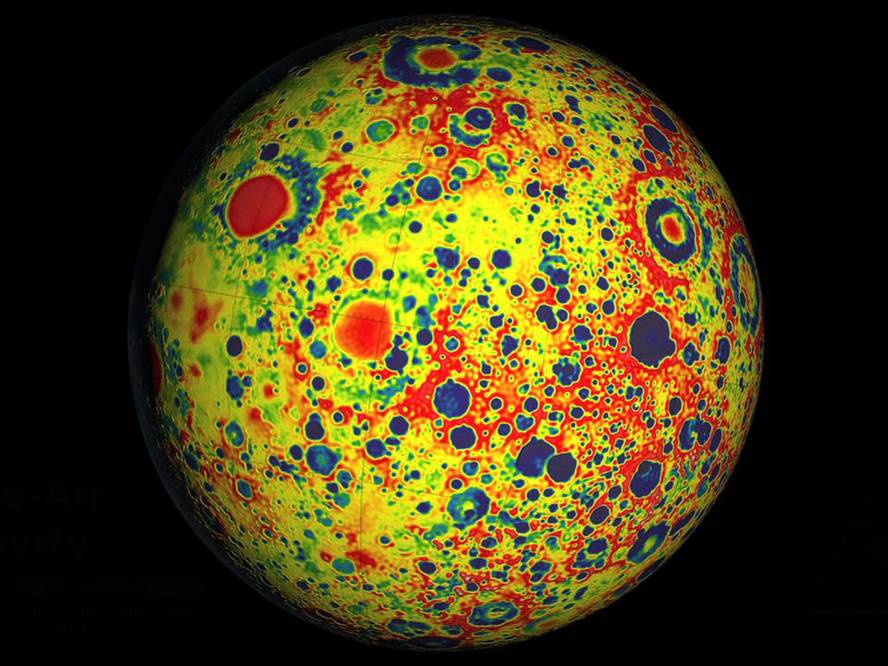Topographic map of the Moon, in particular thanks to gravity
NASA has created the most comprehensive map of the Moon thanks to the data collected in the GRAIL mission. The new map collects topographic characteristics with an accuracy of up to thirteen kilometers, which is five times the best definition. Thanks to the two satellites that make up the GRAIL mission, researchers have been able to differentiate unknown volcanic plains, basins and crater peaks. They have also concluded that the surface of the Moon is thinner than what was considered, between 34 and 43 km (and not 50-60), with a smaller density than was considered and with a fracture.
The GRAIL mission shows a surface shattered by ancient collisions. Some fractures are small fissures, other faults with a depth of a few kilometers and some can reach tens of kilometers of depth. The map provides researchers with useful information on the genesis of the planets of the Solar System and the youth of the Moon itself.
To complete the topographic map of the Moon, NASA has implemented a strategy already used on Earth. The Moon has put two satellites into orbit: Flow and Ev. Ebb follows Flow two hundred kilometers away. When the satellite ahead crosses a higher density zone, it receives a more violent gravity zone, which increases its distance from the satellite that comes from behind. NASA has created the topographic map of the Moon by meticulous measurement of these distance changes: from the change of distance between satellites derives the map of the gravity impulse, from which the density map of the surface is derived. The system measures the distance change with an accuracy of 20-50 nanometers per second and, unlike Earth, the absence of atmospheric obstacles on the Moon has allowed satellites to orbit closer to the surface, at an average distance of 55 kilometers.
Those responsible for the mission present the results of the data collected between 1 March and 29 May 2012 in the journal Science in three articles. But they have more data in their hands. In fact, they decided to prolong last summer and both satellites have continued orbiting the Moon at an ever lower altitude until next December 17 are destroyed against the Moon.






